
Circumcision cups
The mohel may use a cup or cups as part of the brit milah ceremony. I
have these cups as examples:
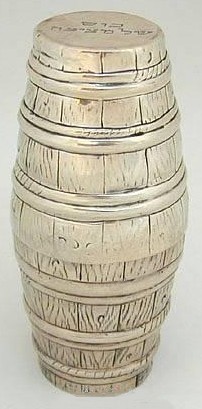
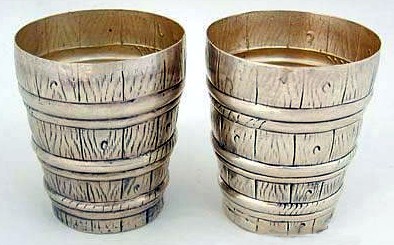 These
German silver cups are from the late 19th or early 20th
century. One cup is inscribed with kos shel
(cup of) metzitzah
and the other cup with kos shel bracha. The first inscription
refers to metzitzah, the practice
of oral suction from the circumcision wound. The second cup
is for a wine blessing.
These
German silver cups are from the late 19th or early 20th
century. One cup is inscribed with kos shel
(cup of) metzitzah
and the other cup with kos shel bracha. The first inscription
refers to metzitzah, the practice
of oral suction from the circumcision wound. The second cup
is for a wine blessing.
The double barrel was a popular German design for circumcision and
marriage cups. Examples exist from as early as the 1700s.
Caution: it is likely that the inscriptions are not original
to the cups and were added later.
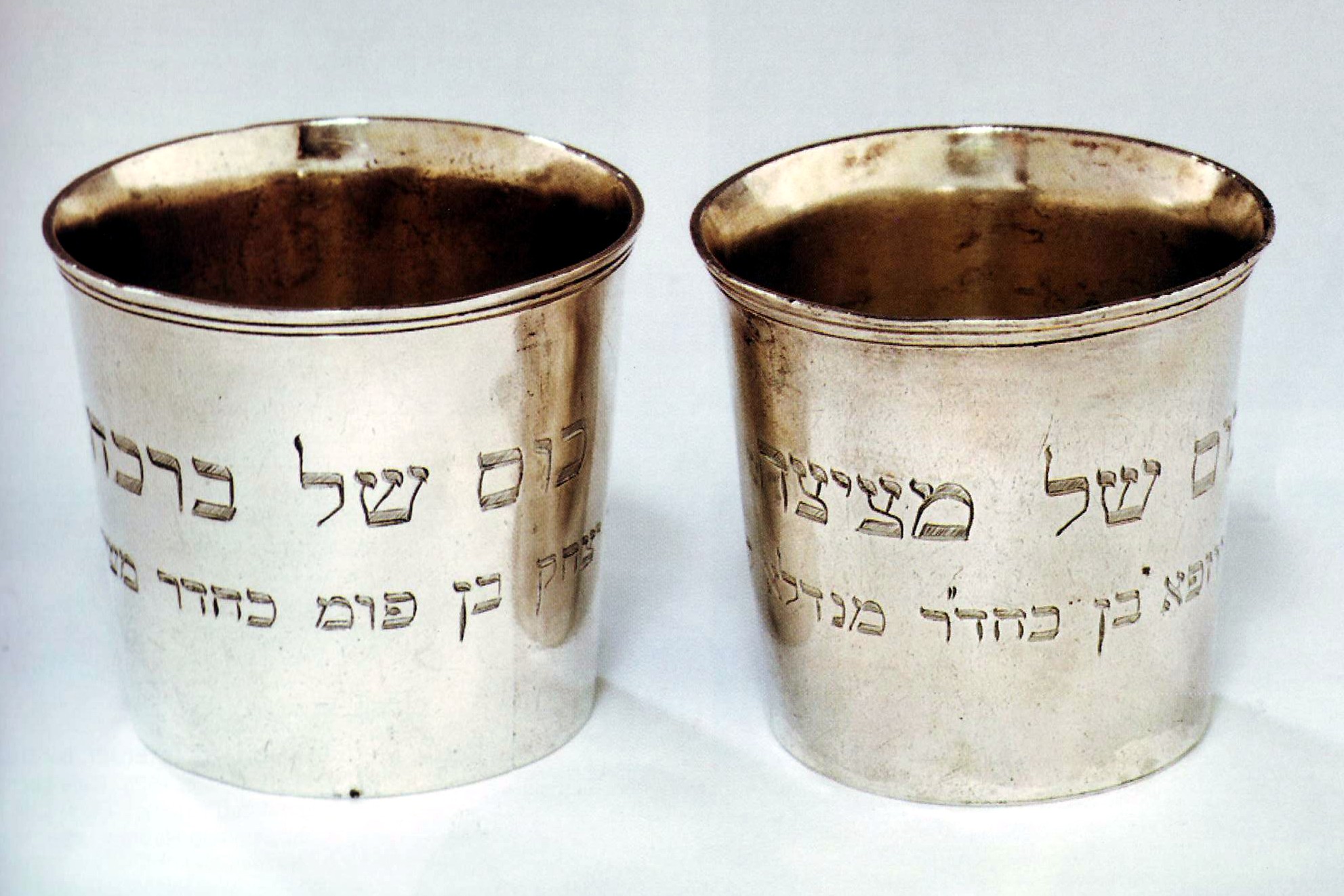 The pair of silver
circumcision cups on the right have Amsterdam hallmarks from
1853. The cups are gilded inside. Unlike the cups
above, an expert antiques dealer judged the inscriptions
authentic.
The pair of silver
circumcision cups on the right have Amsterdam hallmarks from
1853. The cups are gilded inside. Unlike the cups
above, an expert antiques dealer judged the inscriptions
authentic.
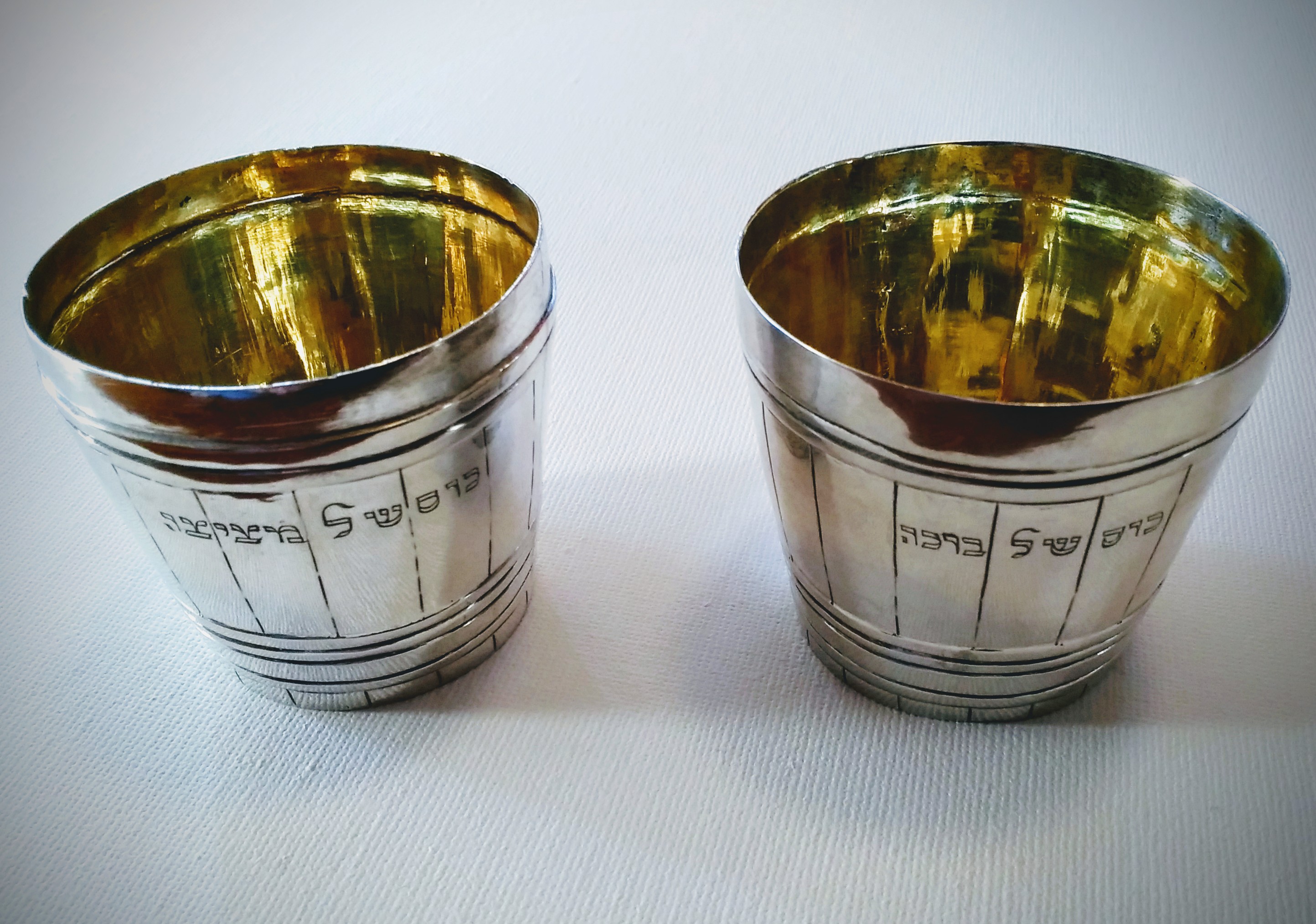
 To
the left is a fine set of silver circumcision cups from Eastern
Germany, c. 1800. Note the original gilding inside.
To
the left is a fine set of silver circumcision cups from Eastern
Germany, c. 1800. Note the original gilding inside.
The impressive box below and to
the left is engraved Beryl Raizman, Mohel
Castalla. The box contains two cups
hallmarked Vienna 1856, shown
below and to the right. Both cups
are inscribed in Hebrew, one for blessing and one for metzizah. Each cup is rather
tall, 10 cm. There is also a glass and tripod silver
piece in this set.

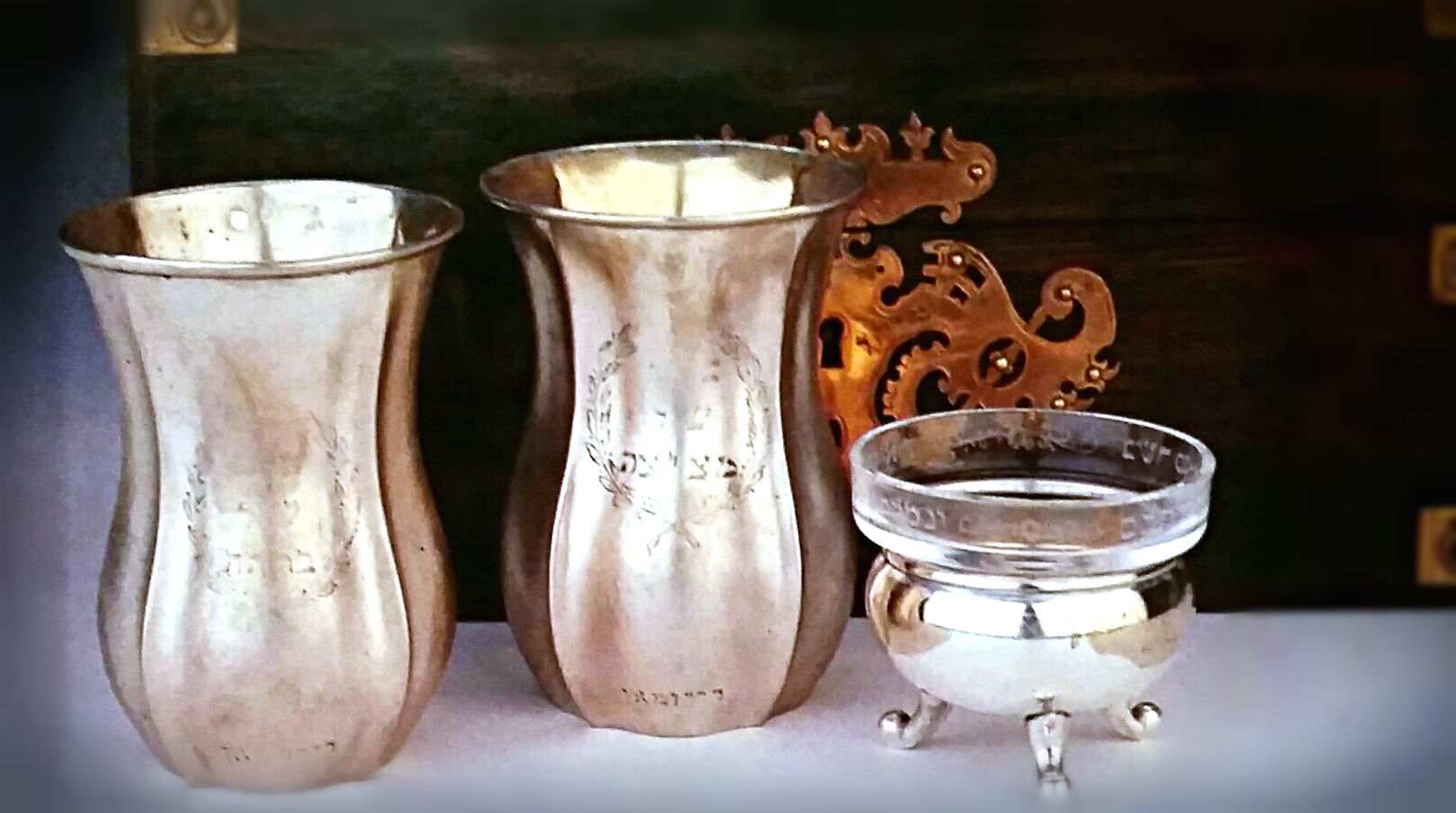
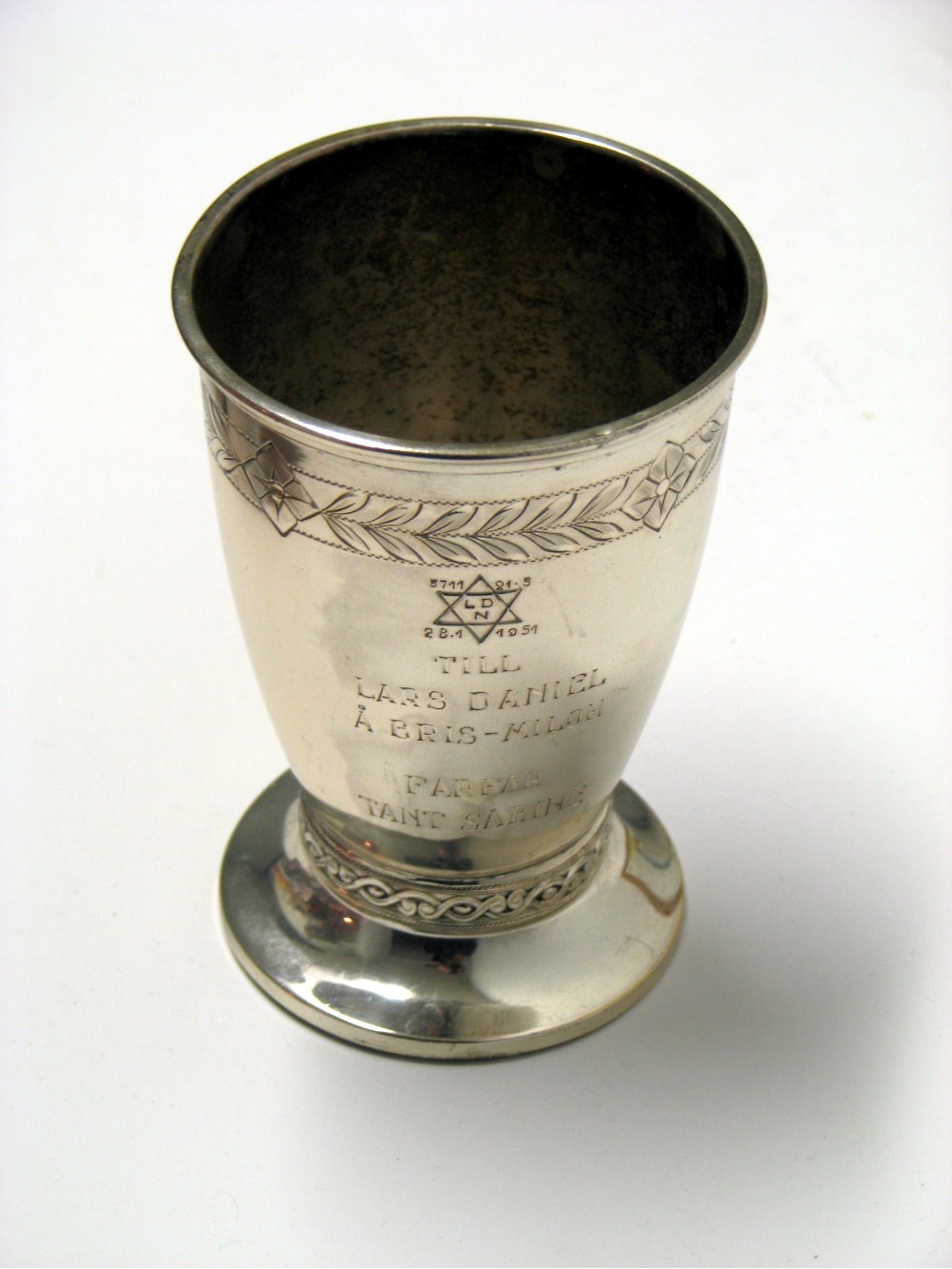
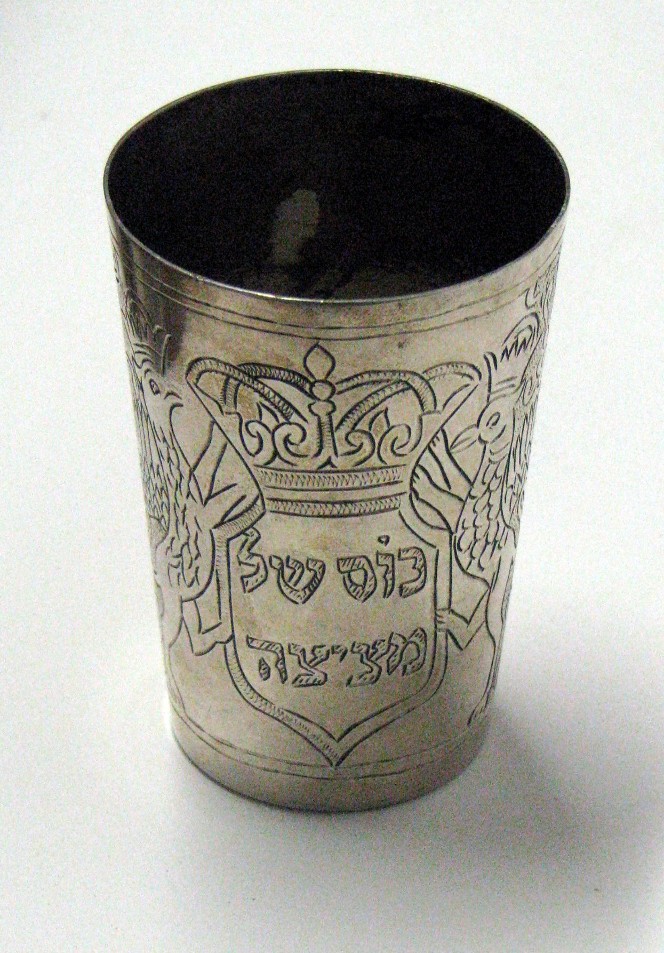 To the right is
a metzitzah
cup. Two crowned animals flank the cartouche.
There are crescent moon and crown hallmarks which identify the
cup as German. There is an additional mark from the
silver maker Bruckmann and Söhne, circa 1930.
Further to
the right is a cup engraved in Swedish. Dated 1951, the
cup is from the child's grandfather and aunt.
To the right is
a metzitzah
cup. Two crowned animals flank the cartouche.
There are crescent moon and crown hallmarks which identify the
cup as German. There is an additional mark from the
silver maker Bruckmann and Söhne, circa 1930.
Further to
the right is a cup engraved in Swedish. Dated 1951, the
cup is from the child's grandfather and aunt.
Click here to learn more about metzitzah b'peh, a
controversial practice.
The next section features some interesting items associated with
circumcision. Click the button below.

Copyright 2006-2025, Robert
Lehrer, MD
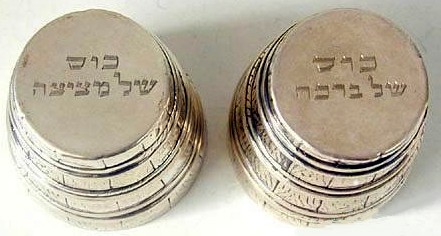


 These
German silver cups are from the late 19th or early 20th
century. One cup is inscribed with kos shel
(cup of) metzitzah
and the other cup with kos shel bracha. The first inscription
refers to metzitzah, the practice
of oral suction from the circumcision wound. The second cup
is for a wine blessing.
These
German silver cups are from the late 19th or early 20th
century. One cup is inscribed with kos shel
(cup of) metzitzah
and the other cup with kos shel bracha. The first inscription
refers to metzitzah, the practice
of oral suction from the circumcision wound. The second cup
is for a wine blessing. 

 To
the left is a fine set of silver circumcision cups from Eastern
Germany, c. 1800. Note the original gilding inside.
To
the left is a fine set of silver circumcision cups from Eastern
Germany, c. 1800. Note the original gilding inside. 


 To the right is
a metzitzah
cup. Two crowned animals flank the cartouche.
There are crescent moon and crown hallmarks which identify the
cup as German. There is an additional mark from the
silver maker Bruckmann and Söhne, circa 1930.
To the right is
a metzitzah
cup. Two crowned animals flank the cartouche.
There are crescent moon and crown hallmarks which identify the
cup as German. There is an additional mark from the
silver maker Bruckmann and Söhne, circa 1930.